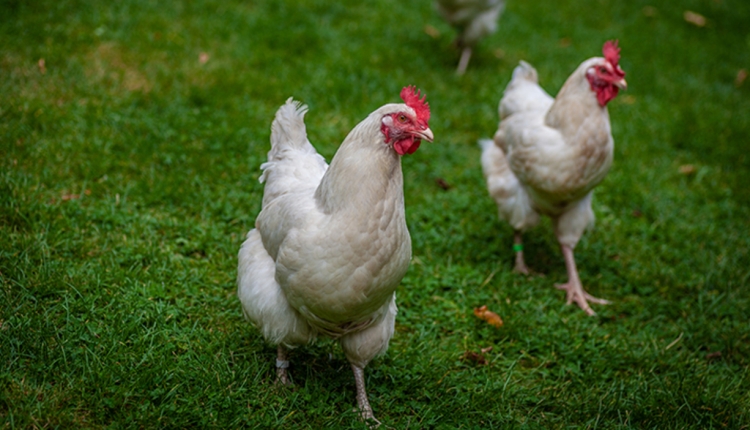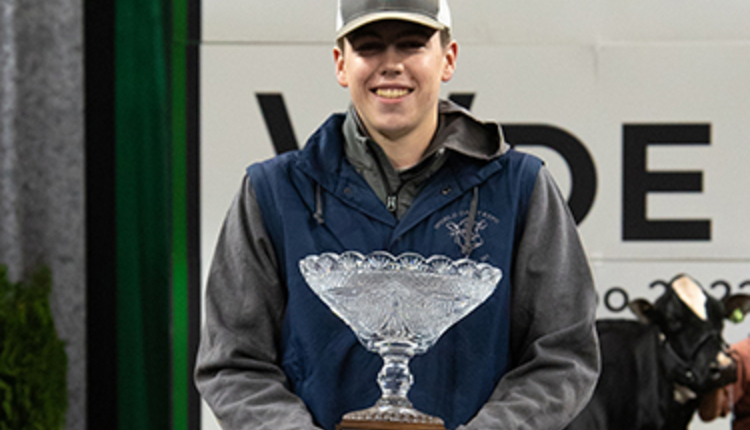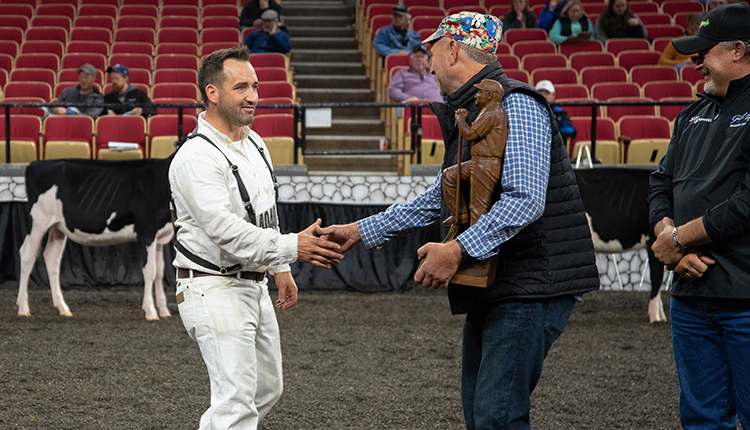The Council on Dairy Cattle Breeding (CDCB) took its first official action relating to the transition of U.S. genetic evaluations by releasing the fee schedule for genomic evaluations. According to the CDCB's fee release (click here to download the pdf), the fees became effective on March 22, 2013. The additional charges are on top of the costs for the individual genomic tests and are expected to fund future genetic evaluations.
In the past, USDA's AIPL (Animal Improvement Programs Laboratory) conducted evaluations but now that responsibility will move to the private sector. This represents a historic shift as taxpayers, through the U.S. government, have funded the American genetic evaluations since their inception. We also have received word from USDA that the nonfunded cooperative agreement was set to be inked by the office of the Secretary of Agriculture earlier this week. That would be the first move to officially set the wheels in motion for the transition from the public to the private sector.
The schedule uses a six-tier approach to collect fees. The plan rewards those who contribute production, type and health data to the system to recalibrate genomic predictions. It is based on nominator's (breed association, A.I. stud or milk testing center) interpretation of the herd's previous contribution to the database. While animals are owned by a variety of people and some are housed in multiple locations, the herd's contribution to genetic evaluations will be based on where the animal resides mainly based on DHIA herd status.
There are three classes of animals: females, first-test males and A.I. service males. In addition to the genomic testing fees, an additional charge will be assessed to fund future genetic evaluations. Those fees range from:
• Females - $0 to $10
• Initial (first-test males): $20 to $400
• A.I. service males: $800 to $2,000
While that is the basic information, downloading the attached PDF will shed more light on all the associated rules. While the above is a simplistic review of the fee structure which included 18 fee possibilities, there are 16 footnotes that contain 1,200-plus words. For those who rely on genetic sales for a portion of their income, it will be worth reviewing the original document.
Most in the industry believe this move is warranted because of the growth in genomic evaluations over the course of the last five years. There is no doubt the amount of genomic evaluations calculated on a monthly basis has exploded. As this has taken place, those at USDA and AIPL wanted to refocus efforts on research and sunset the service function. As a result, traditional genetic evaluations were also folded into the discussion of a public-private transfer.
How has the work grown because of genomics?
In April 2010, genomic predictions on young bulls and heifers started to take place on a monthly basis. At that time there were a combined 47,485. That included 41,822 Holsteins, 4,161 Jerseys and 1,502 Brown Swiss with genomic predictions based initial research and some early testing. One year later, the number of individuals with genomic evaluations doubled to 97,340. That same situation transpired by April 2012 with 193,588 individuals having genetic predictions based on a DNA sample. While not a complete doubling in the last 11 months, there are 362,162 genomic tested animals, including Holsteins (314,938), Jerseys (37,942), Brown Swiss (8,080) and Ayrshires (1,202). The Ayrshire breed was new to the mix this month.
While there is a great deal more to be learned about the genetic evaluations for this coming August, April's evaluations will proceed as they have since we published the industry's first bull list in 1968. We will print them in our April 25 issue.
Author footnote and disclosure: The author of the column has covered reproduction and genetics for Hoard's Dairyman for 18 years. Not only is he active with the genetics for the Hoard's Dairyman Farm's Guernsey and Jersey herd, he plays an integral role in his family's Holstein herd. He has twice served as the Wisconsin Holstein Association president and currently serves as a director of the Holstein Association USA.
In the past, USDA's AIPL (Animal Improvement Programs Laboratory) conducted evaluations but now that responsibility will move to the private sector. This represents a historic shift as taxpayers, through the U.S. government, have funded the American genetic evaluations since their inception. We also have received word from USDA that the nonfunded cooperative agreement was set to be inked by the office of the Secretary of Agriculture earlier this week. That would be the first move to officially set the wheels in motion for the transition from the public to the private sector.
The schedule uses a six-tier approach to collect fees. The plan rewards those who contribute production, type and health data to the system to recalibrate genomic predictions. It is based on nominator's (breed association, A.I. stud or milk testing center) interpretation of the herd's previous contribution to the database. While animals are owned by a variety of people and some are housed in multiple locations, the herd's contribution to genetic evaluations will be based on where the animal resides mainly based on DHIA herd status.
There are three classes of animals: females, first-test males and A.I. service males. In addition to the genomic testing fees, an additional charge will be assessed to fund future genetic evaluations. Those fees range from:
• Females - $0 to $10
• Initial (first-test males): $20 to $400
• A.I. service males: $800 to $2,000
While that is the basic information, downloading the attached PDF will shed more light on all the associated rules. While the above is a simplistic review of the fee structure which included 18 fee possibilities, there are 16 footnotes that contain 1,200-plus words. For those who rely on genetic sales for a portion of their income, it will be worth reviewing the original document.
Most in the industry believe this move is warranted because of the growth in genomic evaluations over the course of the last five years. There is no doubt the amount of genomic evaluations calculated on a monthly basis has exploded. As this has taken place, those at USDA and AIPL wanted to refocus efforts on research and sunset the service function. As a result, traditional genetic evaluations were also folded into the discussion of a public-private transfer.
How has the work grown because of genomics?
In April 2010, genomic predictions on young bulls and heifers started to take place on a monthly basis. At that time there were a combined 47,485. That included 41,822 Holsteins, 4,161 Jerseys and 1,502 Brown Swiss with genomic predictions based initial research and some early testing. One year later, the number of individuals with genomic evaluations doubled to 97,340. That same situation transpired by April 2012 with 193,588 individuals having genetic predictions based on a DNA sample. While not a complete doubling in the last 11 months, there are 362,162 genomic tested animals, including Holsteins (314,938), Jerseys (37,942), Brown Swiss (8,080) and Ayrshires (1,202). The Ayrshire breed was new to the mix this month.
While there is a great deal more to be learned about the genetic evaluations for this coming August, April's evaluations will proceed as they have since we published the industry's first bull list in 1968. We will print them in our April 25 issue.
Author footnote and disclosure: The author of the column has covered reproduction and genetics for Hoard's Dairyman for 18 years. Not only is he active with the genetics for the Hoard's Dairyman Farm's Guernsey and Jersey herd, he plays an integral role in his family's Holstein herd. He has twice served as the Wisconsin Holstein Association president and currently serves as a director of the Holstein Association USA.









